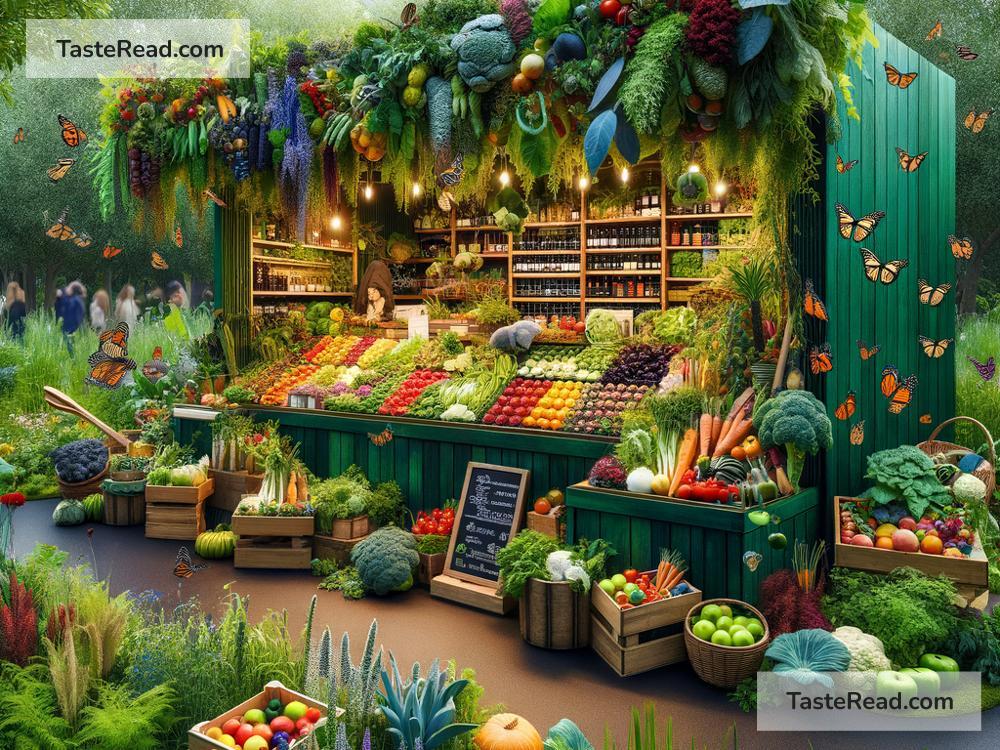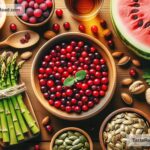Boosting Biodiversity Through Better Food Choices
Biodiversity is the variety of life on Earth, including plants, animals, insects, and microorganisms. It’s essential for the planet’s health and our survival. A diverse ecosystem helps clean the air, grow food, purify water, and protect us from climate change. Sadly, biodiversity is under threat due to deforestation, climate change, pollution, and overuse of natural resources. But did you know that the food choices we make can play a big role in improving biodiversity?
Switching up the foods we eat and supporting sustainable farming practices can help restore ecosystems, protect wildlife, and create a healthier planet. Here are some ways your plate can make a positive impact on biodiversity.
1. Eat Local and Seasonal Foods
Eating locally grown and seasonal foods supports biodiversity and reduces the carbon footprint of transportation. Local farms often use smaller, diverse plots instead of large-scale monoculture farms. Monoculture farming means growing only one type of crop over large areas, which reduces biodiversity and can lead to soil degradation.
When you eat local, you’re encouraging farmers to grow a mix of crops, which protects soil, improves habitats, and reduces the need for harmful pesticides. Seasonal foods also require fewer resources like energy and storage, helping to protect the environment.
2. Choose Organic Foods
Organic farming avoids chemicals like synthetic fertilizers, pesticides, and herbicides which harm wildlife, soil microorganisms, and water systems. Organic farms are healthier for pollinators like bees, whose survival is critical for biodiversity. They also tend to have more plant and animal species living around the farm because of natural pest control methods and better crop rotation practices.
Look for organic labels when shopping. While organic foods may be a bit pricier, you’re investing in protecting the environment, promoting biodiversity, and supporting sustainable agriculture.
3. Eat a Variety of Foods
When we demand only popular crops like rice, wheat, or corn, farmers focus on growing these over large areas, reducing agricultural biodiversity. This “monoculture farming” leads to habitats being destroyed, soil losing nutrients, and native species struggling to survive.
You can help reverse this trend by diversifying your diet. Try less common grains like quinoa, millet, buckwheat, and barley. Explore different types of fruits and vegetables such as heirloom tomatoes, purple carrots, and unique herbs. Eating a variety of foods encourages farmers to grow diverse crops, which creates healthier farms and ecosystems.
4. Reduce Meat and Dairy Consumption
Large-scale meat and dairy production is one of the biggest threats to biodiversity. It uses vast amounts of land and water, destroying forests and grasslands, polluting rivers, and releasing harmful greenhouse gases into the atmosphere.
Reducing your consumption of meat and dairy can make a huge difference. Try swapping a few meals each week with plant-based alternatives. Beans, lentils, tofu, and tempeh are great protein sources that don’t require the high-resource demands of livestock farming. If you choose to eat meat or dairy, look for options from small farms that practice sustainable and pasture-based farming.
5. Support Agroforestry
Agroforestry is a farming method that combines trees, shrubs, and crops on farmland. Unlike industrial farming, agroforestry supports biodiversity by providing habitats for wildlife and enriching the soil. Trees and shrubs also protect crops from extreme weather and help sequester carbon to fight climate change.
Look for products that support these systems, like shade-grown coffee or cocoa. Shade-grown farms preserve forests and protect animals like birds, bats, and insects that rely on tree canopies for shelter.
6. Choose Foods That Protect Pollinators
Pollinators like bees and butterflies are key players in biodiversity. They help plants reproduce and ensure we have fruits, nuts, vegetables, and grains to eat. Unfortunately, pesticides, habitat loss, and climate change are causing pollinator populations to decline.
Some food companies and farmers use pollinator-friendly practices by creating wildflower borders, reducing chemical use, and building habitats for bees. You can support these practices by buying foods labeled as “pollinator-friendly” or from brands that openly support pollinator conservation.
7. Avoid Overfished Seafood
Overfishing not only harms fish populations but also disrupts marine ecosystems. When certain fish species are wiped out, other marine animals like dolphins, turtles, and coral reefs suffer as well.
To prevent this, choose seafood that’s sustainably sourced. Look for labels like Marine Stewardship Council (MSC) or buy fish like sardines, mackerel, and anchovies, which tend to be less impactful on marine ecosystems.
8. Cut Down on Food Waste
Wasted food means wasted resources like water, land, and energy. It also contributes to deforestation and habitat destruction. By reducing food waste, you’re indirectly protecting biodiversity.
Plan meals carefully, store food properly, and use leftovers creatively to waste less. Composting food scraps can also help enrich the soil instead of sending waste to landfills.
Conclusion: Small Choices, Big Impact
It might seem surprising, but the foods we eat every day can shape the health of the planet. By eating local and seasonal foods, choosing organic options, diversifying your diet, and reducing waste, you’re contributing to a healthier and more biodiverse world. It’s not about perfection – every small step counts. Together, our choices can nurture ecosystems, protect wildlife, and ensure a brighter future for nature and humanity alike. So let’s start making biodiversity-friendly choices one meal at a time!


